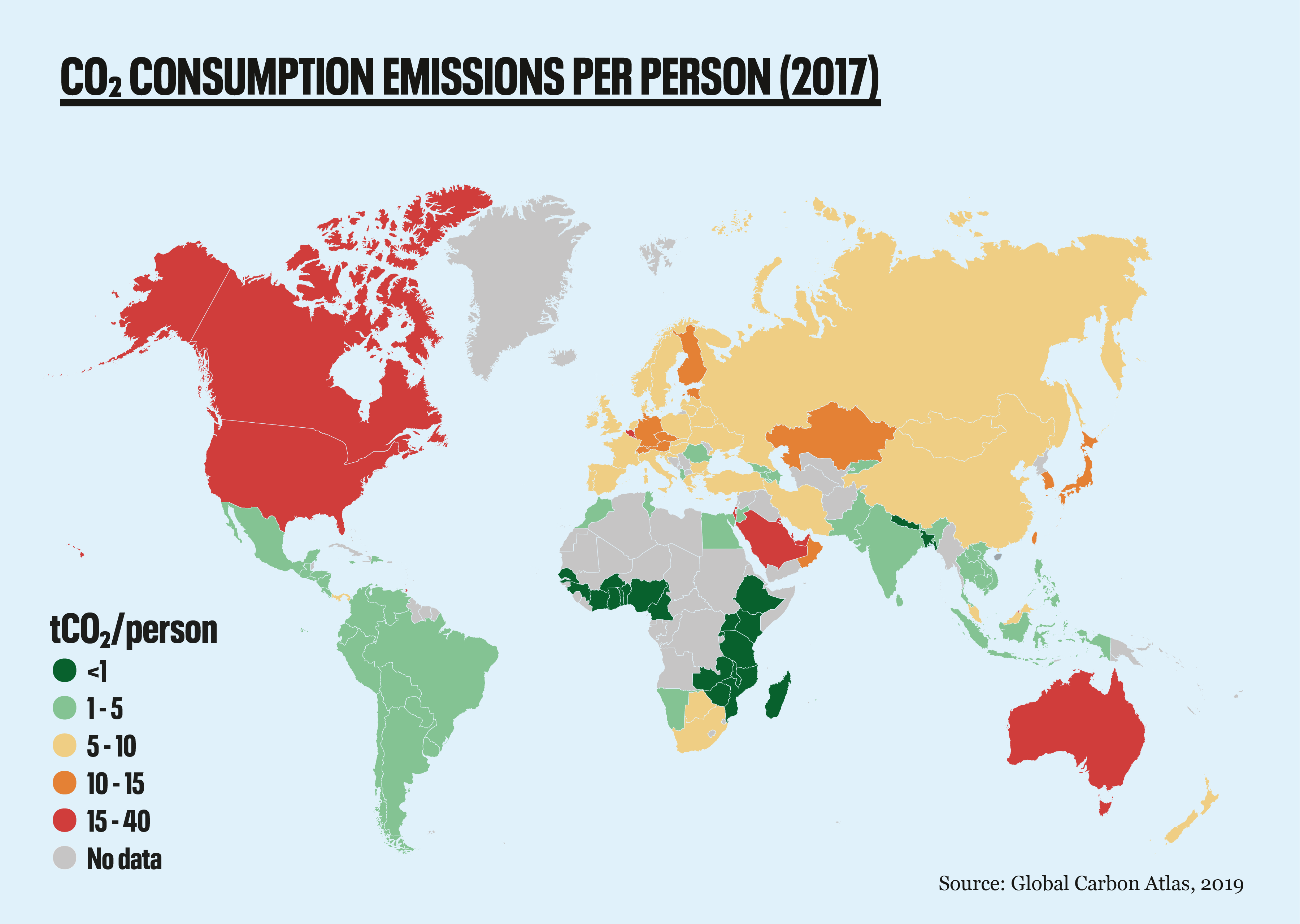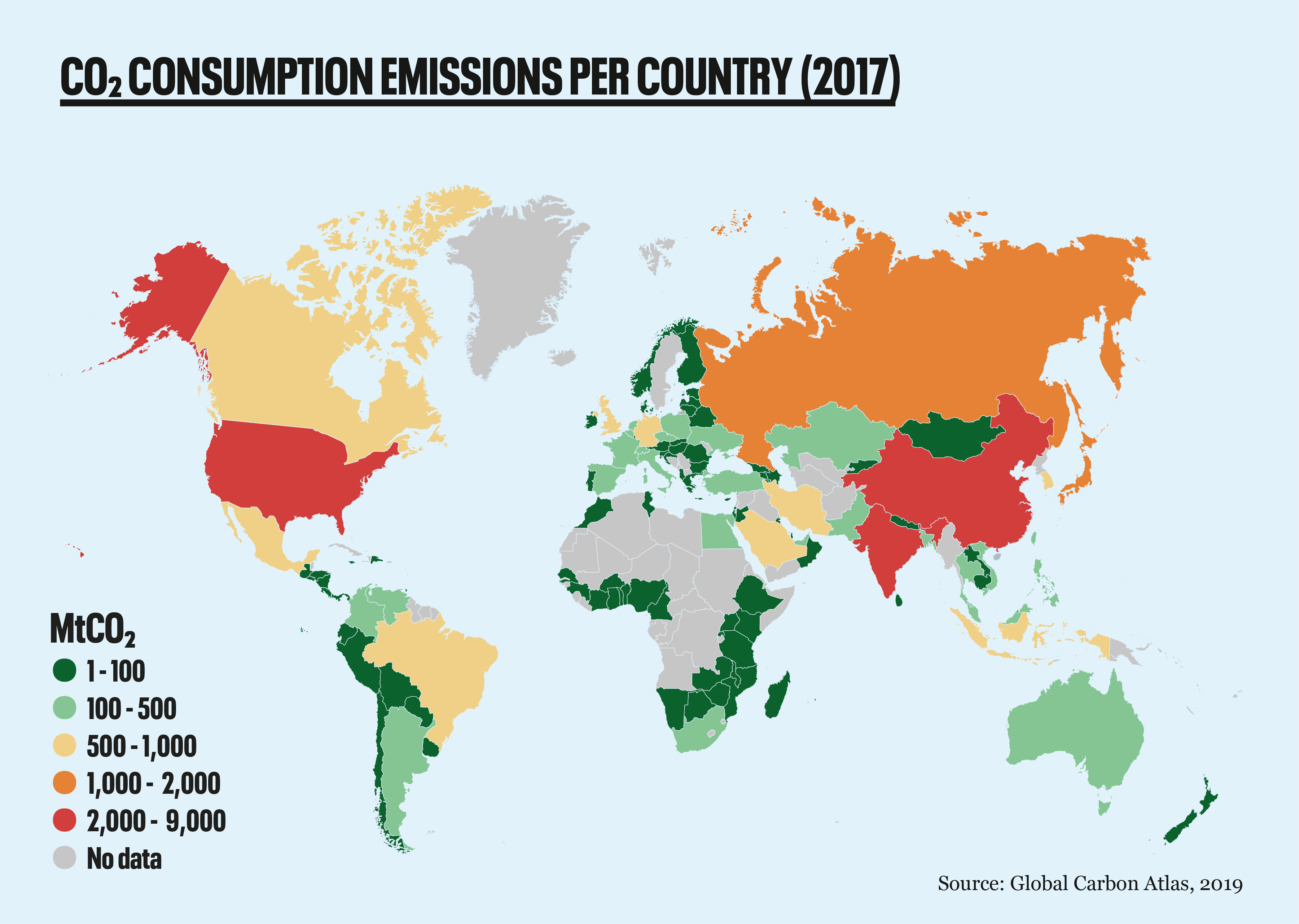
Study: Population growth cancelling out climate change progress
A significant new study, published in the latest edition of the Journal of Population and Sustainability, finds that more than three-quarters of the reductions in carbon emissions achieved since 1990 by increased efficiency and reducing carbon dioxide emissions from energy production have been cancelled out by the effects of a growing population. The study provides the clearest picture so far of how population growth holds back progress in preventing climate change.

The study, by Professor Aalok Ranjan Chaurasia, titled Population effects of increase in world energy use and CO2 emissions: 1990 – 2019, looked at the effect of population on global energy use and carbon dioxide emissions across 44 countries, and found that population growth has a significant effect on both at a global level, although the impact varied widely across the countries analysed.
The peer-reviewed research found the most important driver of energy use and CO2 emissions everywhere to be economic growth, but that population played a very significant part, accounting on average for a third of energy demand and carbon emissions. Improvements in efficiency which reduce both energy demand and the amount of carbon emitted have reduced emissions significantly over the last 30 years but the additional demand, caused partly by population growth, has meant that these solutions are effectively driving with the brakes on.
Although this is an area that is under-researched, another study published in 2016 used two scenarios to show that a massive increase in renewable energy production will be needed within the decade to keep global warming to under 2°C, and meet expanding population and consumption levels as countries in the Global South become more affluent. It is highly unlikely that this required increase in renewable energy production will occur.
“Conspicuous silence”
The author points out the lack of discussion of the impact of population growth on our environment and highlights that the United Nations Sustainable Development Goals fail to address the population factor. He notes that SDG 8, economic growth, seems incompatible with long term sustainability.
“There is a conspicuous silence in recent years about the role of population in the debate on environmental sustainability … Unfortunately, the United Nations 2030 Sustainable Development Agenda pays only lop-sided attention to these interactions which are the key to sustaining life on the planet Earth”
The analysis
The study analyses the key factors influencing total energy use and carbon emissions, and then quantifies the contribution of each to emissions over the 29 year period. The key driver of demand for energy is economic activity, a combination of the number of people and their average activity, measured by Gross Domestic Product. Overall, as people and societies across the world become more affluent, their average economic activity grows and, of course, population has grown by more than two billion over that period. However, the impact of that activity can be reduced if less energy is needed to support the economic activity (known as energy intensity), and the production and use of that energy generates less carbon (known as carbon intensity).
Globally, over 29 years from 1990 to 2019, we have reduced energy intensity of GDP by more than a third – in other words, the same level of economic activity now requires significantly less energy to support it. This is because fewer of the things we do require as much energy as in the past, and the energy we do use is produced and used more efficiently.
At the same time, we have also reduced the carbon intensity of that energy, in other words we produce a lower level of emissions today for the same amount of energy use. This is because changes such as reducing the amount of coal and increasing alternative energy supplies have made energy cleaner. These two changes combine to push down emissions significantly.
The study finds that globally, the growth in economic activity per person is the main driver of energy use and carbon emissions – in each case responsible for around twice the contribution of population growth on average. This is unsurprising, as we know that economic growth has been far faster than population growth. This nevertheless means that population growth has accounted for a third of emissions during this critical period. The total amount of emissions generated by population growth, is equal to two-thirds of the emissions saved through improving energy and carbon intensity.
Unequal responsibility
We must beware of drawing simplistic conclusions from these global figures. Carbon emissions are not evenly spread across the world, with the level of carbon emissions per person – and thus responsibility for climate change – being hugely greater in the most affluent countries. This variation occurs because the level of economic activity, consumption, and energy and carbon intensity varies from country to country, depending on the nature of their economies and the ways in which they generate energy.
More details of the study’s findings can be found on our press release and in the original paper.


Journal of Population and Sustainability
The Journal of Population and Sustainability is an open-access, peer-reviewed interdisciplinary journal exploring all aspects of the relationship between human numbers and environmental issues. It is published by Population Matters but entirely editorially independent.



